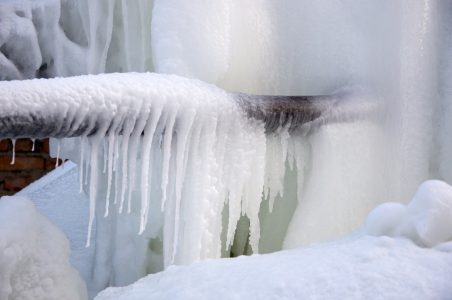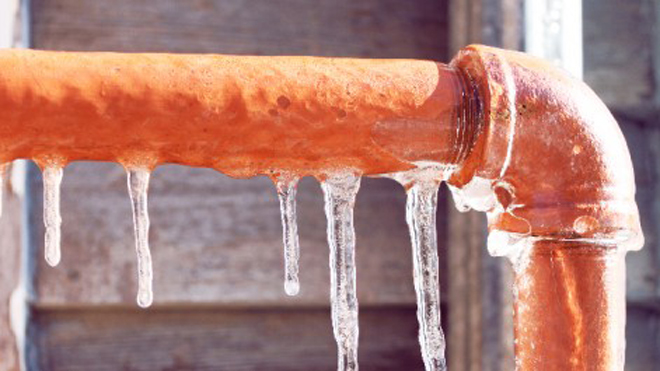Key Methods for Avoiding Frozen Pipes in Cold Weather
Key Methods for Avoiding Frozen Pipes in Cold Weather
Blog Article
Have you been on the lookout for related information involving Helpful Tips to Prevent Frozen Pipes this Winter?

Cold weather can wreak havoc on your plumbing, especially by freezing pipelines. Below's just how to stop it from taking place and what to do if it does.
Intro
As temperatures decline, the risk of icy pipelines rises, potentially causing expensive repair work and water damage. Recognizing exactly how to prevent frozen pipes is important for homeowners in chilly climates.
Comprehending Icy Pipes
What creates pipelines to freeze?
Pipelines ice up when subjected to temperature levels below 32 ° F (0 ° C) for prolonged periods. As water inside the pipes freezes, it broadens, putting pressure on the pipeline wall surfaces and potentially creating them to break.
Dangers and problems
Frozen pipes can lead to water supply interruptions, home damages, and costly repairs. Ruptured pipes can flood homes and cause extensive architectural damages.
Signs of Frozen Pipes
Recognizing frozen pipelines early can stop them from bursting.
Exactly how to determine icy pipelines
Seek lowered water flow from faucets, uncommon smells or sounds from pipes, and noticeable frost on exposed pipes.
Avoidance Tips
Protecting vulnerable pipes
Cover pipelines in insulation sleeves or utilize warmth tape to shield them from freezing temperature levels. Concentrate on pipelines in unheated or outside locations of the home.
Home heating strategies
Maintain interior spaces properly warmed, especially locations with plumbing. Open closet doors to permit cozy air to distribute around pipes under sinks.
Securing Outside Plumbing
Garden hoses and outdoor taps
Detach and drain pipes yard hose pipes prior to winter season. Set up frost-proof spigots or cover outside taps with insulated caps.
What to Do If Your Pipes Freeze
Immediate activities to take
If you believe icy pipes, maintain taps available to relieve stress as the ice thaws. Make use of a hairdryer or towels taken in hot water to thaw pipes gradually.
Long-Term Solutions
Architectural adjustments
Consider rerouting pipes away from outside wall surfaces or unheated locations. Include additional insulation to attic rooms, cellars, and crawl spaces.
Upgrading insulation
Invest in high-grade insulation for pipelines, attic rooms, and walls. Appropriate insulation assists preserve consistent temperature levels and decreases the threat of frozen pipes.
Verdict
Avoiding icy pipelines needs positive actions and quick responses. By comprehending the reasons, signs, and safety nets, property owners can secure their pipes during cold weather.
5 Ways to Prevent Frozen Pipes
Drain Outdoor Faucets and Disconnect Hoses
First, close the shut-off valve that controls the flow of water in the pipe to your outdoor faucet. Then, head outside to disconnect and drain your hose and open the outdoor faucet to allow the water to completely drain out of the line. Turn off the faucet when done. Finally, head back to the shut-off valve and drain the remaining water inside the pipe into a bucket or container. Additionally, if you have a home irrigation system, you should consider hiring an expert to clear the system of water each year.
Insulate Pipes
One of the best and most cost-effective methods for preventing frozen water pipes is to wrap your pipes with insulation. This is especially important for areas in your home that aren’t exposed to heat, such as an attic. We suggest using foam sleeves, which can typically be found at your local hardware store.
Keep Heat Running at 65
Your pipes are located inside your walls, and the temperature there is much colder than the rest of the house. To prevent your pipes from freezing, The Insurance Information Institute suggests that you keep your home heated to at least 65 degrees, even when traveling. You may want to invest in smart devices that can keep an eye on the temperature in your home while you’re away.
Leave Water Dripping
Moving water — even a small trickle — can prevent ice from forming inside your pipes. When freezing temps are imminent, start a drip of water from all faucets that serve exposed pipes. Leaving a few faucets running will also help relieve pressure inside the pipes and help prevent a rupture if the water inside freezes.
Open Cupboard Doors
Warm your kitchen and bathroom pipes by opening cupboards and vanities. You should also leave your interior doors ajar to help warm air circulate evenly throughout your home.

I ran across that content on Helpful Tips to Prevent Frozen Pipes this Winter while doing a search on the search engines. Kindly take the time to promote this entry if you appreciated it. I appreciate reading our article about How to prepare your home plumbing for winter weather.
Prices & Booking Report this page